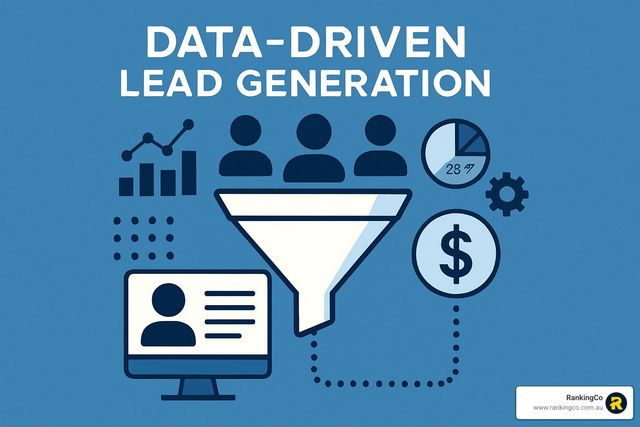
How to Build a Cross-Asia B2B Lead Pipeline That Converts
November 20, 2025Asia isn’t just a market—it’s a vast, multilayered economic engine fueled by innovation, tradition, and rapid transformation. For companies looking to expand, Asian market penetration requires a grounded understanding of how business operates here. Economic acceleration, digital adoption, and urbanization have created a fertile environment for companies pursuing B2B Lead Generation for Asia. The region demands respect, adaptability, and cultural intelligence. Buyers aren’t merely choosing vendors—they’re selecting long-term partners.
Understanding these nuances isn’t optional. It’s the backbone of every strategic move you make. Asia’s decision-making process is relational at its core. Meetings may stretch longer, approvals may flow through hierarchical layers, and negotiations often hinge on credibility rather than flashy proposals. Companies that succeed don’t rush the process; they honor it.
Digital transformation is accelerating this ecosystem even further. Mobile-first behaviors dominate markets such as Southeast Asia and India, while Japan and Korea favor deeply researched procurement cycles. And through it all, B2B Lead Generation for Asia remains a sophisticated dance of data, culture, messaging, and trust. Understanding the foundation ensures you navigate the region not as a foreign invader, but as a strategic partner ready to grow.

Why Entering Asia Requires a Local-First Mindset
Asia rewards the brands that respect its complexity. A local-first mindset is the difference between shallow market entry and lasting influence. Companies that enter with a one-size-fits-all approach quickly discover that B2B Lead Generation for Asia isn’t the same as generating leads in Western territories. Asian buyers demand relevance—relevance in language, approach, market understanding, and even negotiation etiquette.
Compliance frameworks differ across borders. China’s PIPL, Singapore’s PDPA, and India’s evolving data regulations shape how companies collect and nurture leads. Failing to align your lead generation systems with these laws will erode trust instantly.
Adopting a localized messaging strategy—supported by multilingual content—strengthens inbound visibility. Buyers want messaging that mirrors their business environment, not generic global templates. In many Asian markets, personalization is power. The more you tailor your story, the more responsive your audience becomes.
Local-first thinking is more than translation—it’s transformation. It means auditing your digital presence, refining your value proposition, and investing in region-specific sales enablement. That’s how top global brands win at B2B Lead Generation for Asia.

Building Trust and Visibility in Asian Markets
Trust is currency in Asia. Without it, your marketing campaigns will fall short, your prospects will turn cold, and your pipeline will dry up before it ever sees momentum. Building trust takes time, and it thrives on consistency. This is where thought leadership, local credibility, and repetition intertwine.
Earned authority matters deeply. Asian buyers rely heavily on referrals, case studies, and endorsements. They want to see who you’ve helped, how you’ve delivered, and whether your brand aligns with their cultural and operational expectations. This makes reputation-building an indispensable tool in B2B Lead Generation for Asia.
Relationship-building also plays a huge role. Many Asian cultures prioritize personal connection before business negotiation. Coffee meetings, dinners, industry events, and repeated interactions form bonds that no automated campaign can replace.
Visibility grows through localization—local PR, region-relevant content, and tailored outreach. When your messaging speaks their language—literally and culturally—you win trust faster and shorten lengthy sales cycles. Top companies combine digital presence with human connection to dominate their category in Asia.
/B2B%20lead%20generation%20companies/EN_b2b-lead-generation-companies-card-2.png)
Top B2B Lead Generation Channels in Asia
Asia’s digital channels are unlike any other region. Messaging apps command enormous attention. Platforms like WeChat, LINE, WhatsApp, KakaoTalk, and Telegram operate as daily business tools. These channels allow personalized, conversational engagement—making them essential in B2B Lead Generation for Asia.
Paid advertising strategies thrive as well, but success requires targeting finesse. Asia’s audiences aren’t homogeneous. Japan values precision and detail, while Indonesia and Vietnam respond well to dynamic, mobile-friendly creatives. Co-marketing partnerships with local associations can skyrocket brand credibility.
Events—virtual or in-person—remain a powerhouse. Asian business culture values face-to-face interaction. Conferences, expos, summits, and industry workshops give foreign brands the opportunity to demonstrate expertise and forge meaningful relationships.
Webinars, especially educational ones, perform exceptionally well. Asian decision-makers value pragmatic insights and proven strategies. Deliver knowledge first, pitch later—that’s the formula for high-quality lead nurturing across the region.

Winning With Data-Driven Lead Generation
Data is your compass in Asia’s vast landscape. Companies that operationalize CRM systems and integrate AI-driven lead scoring gain a decisive advantage. Predictive analytics help you understand buyer behavior, forecast intent, and identify high-value accounts across different markets.
Segmentation must be hyper-refined. Asia is not a single market—it’s a mosaic. Segment by industry, region, language, company size, cultural factors, and digital maturity. This level of precision makes B2B Lead Generation for Asia more effective and more profitable.
AI tools provide actionable insights into engagement patterns, content resonance, and pipeline velocity. With the right data infrastructure, your team gains clarity on where to focus, who to prioritize, and how to personalize outreach. Precision builds trust—and trust builds conversion.
Companies that invest early in data infrastructure carve out long-term dominance. They don’t chase leads—they attract them with accuracy, insight, and timing.

Challenges Most Foreign B2B Brands Face
Penetrating Asia is rewarding but not easy. Competition is intense, especially from local giants that understand buyer psychology intuitively. Foreign companies must overcome skepticism, language barriers, and preference for established local providers.
Misaligned communication is another barrier. Many companies underestimate the importance of cultural nuance. A message that works in the US or Europe can fall flat—or offend—Asian buyers. This deeply affects B2B Lead Generation for Asia.
Another challenge is operational misalignment. Sales teams often lack regional training. Marketing teams lack localized content. Leadership underestimates market complexity. These issues ripple through the buyer journey and slow conversion.
The good news? Companies that embrace adaptation outperform. They listen, learn, and localize. They treat Asia not as a territory to conquer, but a partnership to nurture.
Conclusion
Winning in Asia means committing—not dabbling. The companies that excel at B2B Lead Generation for Asia understand that every message, meeting, and strategy must respect the region’s diversity and depth. Asia rewards consistency, cultural fluency, and long-term vision. Build trust, localize deeply, lead with value, and your brand won’t just enter Asia—it will thrive here.


